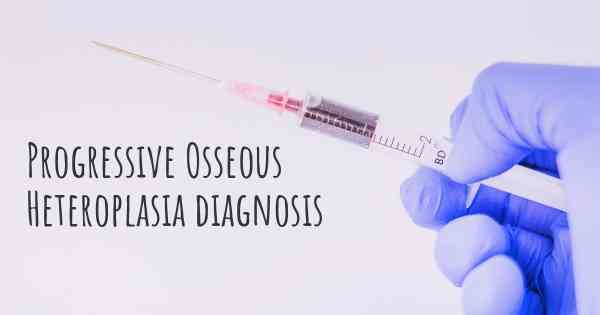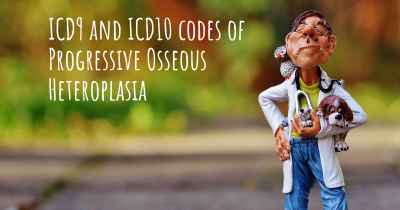How is Progressive Osseous Heteroplasia diagnosed?
See how Progressive Osseous Heteroplasia is diagnosed. Which specialists are essential to meet, what tests are needed and other useful information for the diagnosis of Progressive Osseous Heteroplasia

Diagnosis of Progressive Osseous Heteroplasia
Progressive Osseous Heteroplasia (POH) is a rare genetic disorder characterized by the abnormal formation of bone in soft tissues such as muscles, tendons, and ligaments. Diagnosing POH involves a combination of clinical evaluation, medical history assessment, imaging studies, and genetic testing.
Clinical Evaluation
The initial step in diagnosing POH involves a thorough clinical evaluation by a healthcare professional. The doctor will examine the patient's symptoms, medical history, and family history to identify any patterns or indications of POH. They will also assess the progression and severity of bone formation in soft tissues through physical examination.
Medical History Assessment
Obtaining a detailed medical history is crucial in diagnosing POH. The doctor will inquire about the patient's symptoms, the age of onset, and the progression of bone formation. They will also ask about any family history of similar symptoms or known genetic disorders. This information helps in determining the likelihood of POH and guides further diagnostic investigations.
Imaging Studies
Imaging studies play a vital role in diagnosing POH. X-rays, computed tomography (CT) scans, and magnetic resonance imaging (MRI) are commonly used to visualize the abnormal bone formation and assess its extent. These imaging techniques provide detailed images of the affected soft tissues, helping to differentiate POH from other conditions with similar symptoms.
Genetic Testing
Genetic testing is the definitive method for diagnosing POH. It involves analyzing the patient's DNA to identify mutations in the GNAS gene, which is responsible for regulating bone formation. The most common mutation associated with POH is a specific alteration in the GNAS gene called GNAS1-A/B. Genetic testing can be performed using a blood sample or other tissue samples.
It is important to note that genetic testing for POH should be conducted by a qualified geneticist or genetic counselor who specializes in rare genetic disorders. They will interpret the test results and provide appropriate genetic counseling to the patient and their family members.
Differential Diagnosis
POH shares some similarities with other conditions that involve abnormal bone formation, such as fibrodysplasia ossificans progressiva (FOP) and Albright hereditary osteodystrophy (AHO). Differential diagnosis is essential to distinguish POH from these conditions and ensure accurate treatment and management.
In conclusion, diagnosing Progressive Osseous Heteroplasia involves a comprehensive approach that includes clinical evaluation, medical history assessment, imaging studies, and genetic testing. The combination of these diagnostic methods helps healthcare professionals accurately identify POH and differentiate it from other conditions with similar symptoms. Genetic testing, specifically analyzing the GNAS gene, is the definitive method for confirming a diagnosis of POH. Seeking the expertise of genetic specialists is crucial for accurate interpretation of test results and appropriate genetic counseling.








